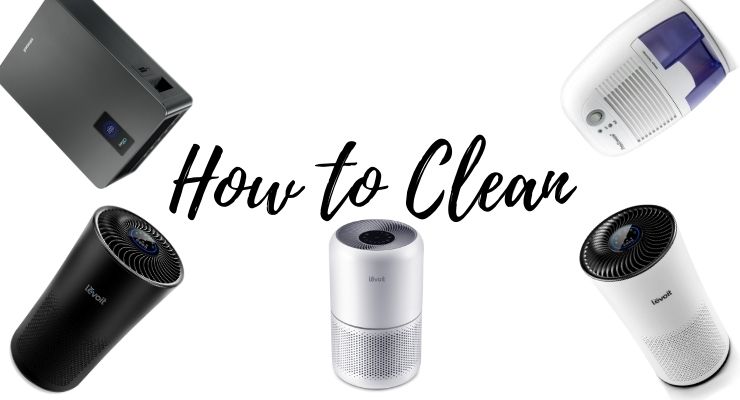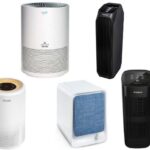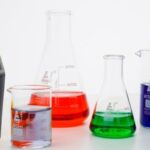While purchasing an air purifier, it is exigent to know how to clean an air purifier. Maintaining an air purifier is vital to make it smooth and handy. If you don’t clean or maintain your filter, the unit can quickly become clogged with dirt and dust along with pet dander.
This will reduce airflow to the fan motor, which may lead to more frequent breakdowns of the fan motor and eventually cause damage to other components in the system. Cleaning an air purifier requires patience because it is so tightly packed with material that it must be removed before being rewashed.
Here are some tips on how to do this properly:
Can You Wash Air Purifier Filters?
Yes, you can wash your air purifier filters! Regular washing can prolong the life of your filter. When the life span of a filter is about to end, which usually happens after 1-2 years or when it reaches 5-6 washes, you should take a new one out and switch out the old one with the new one.
For safety reasons, only use mild soap and water (no detergents) to wash any of your filters. Simply grab a spray nozzle over top of the container where you will be pouring water and add two tablespoons of chlorinated detergent.
No matter what you want, make sure you shake up the container first, as this will ensure that no spots on the top are dirty. This will keep you from wasting time by spraying on a spot that has already been wet.
Keep Your Air Filter Clean To Protect Yourself And Your Family From The Dangers Of Infections (And Allergies!)
Can You Wash a HEPA Filter?
Yes. You just have to make sure to follow the instructions on the box. When you wash a HEPA filter, never use anything with harsh chemicals that may harm the HEPA filter (such as bleach).
It’s also important not to scrub too hard or when DRY because this can damage the material used inside it, which will lead to less efficient air filtering. Simple soap and water should do fine unless your pets have been near it, in which case you’ll want a pet-friendly household cleaner like Windex or Lysol. Then let it dry before putting it back and running your fan for another 10 minutes or so before turning on your HVAC system.
How to Clean an Air Purifier to Make It Work Better
There are a variety of types and styles of air purifiers, each with its cleaning requirements. It would help if you always looked to your device manual for the exact steps you need to take to clean it properly. However, here is a general guideline:
Step 1: Ensure that your purification system is unplugged:
Before you get started, make sure to unplug your air filter.
Step 2: Clean the ventilation system with a soft brush:
When it’s time to clean your air purifier, use a damp cloth or soft brush to remove any debris from the vents. If they are extra dirty after cleaning, feel free to wash them with warm soap and water. To take off the front grill of your air purifier (the next step), be sure not to damage any internal components and follow all safety instructions for proper usage.
Step 3: Reduce the front grill for filter access:
There are a few ways to clean your HEPA air purifier. The first thing you should do to remove the front grill is take off the “easy-remove” tab that you just need to pull on. This way allows for more frequent dust collection than if you dry clean only. Option two would involve replacing modern roller shades instead of cleaning the device regularly!
Step 4: Try to determine whether your filters are washable or removable:
If you do not want to constantly purchase new air purifier filters, then take the time and effort to clean them thoroughly. You should also read your manual before cleaning because it may have specific instructions for how best to maintain these reusable components of an air purifier unit.
Do you have reusable filters? Washing them takes time, so do it right the first time to avoid the hassle.
To start, be sure to place your reusable filters in a soapy lather of water. Use some elbow grease while scrubbing to remove any dirt or stains, then rinse them with warm water. Let them dry overnight before reinserting them into the filter compartment.
Your purifier’s filters will get dirtier the longer you use them in a polluted area. If your home is particularly dusty, cleaning and changing them more often may be necessary to maintain optimum performance.
Step 5: Replacement of the grill and filters:
After cleaning your filters, follow these steps to replace them in the correct location. First, attach a grill of some sort back onto the front side of an air filter that you’ve already cleaned; then reattach it back into its original position inside your system and turn on power so that everything is working properly again!
Step 6: Remove your air purifier outside:
After you’ve unplugged your purifier, wipe the exterior down with a damp cloth to finish cleaning it. You’re done!
Step 7: Next time, buy new filters.
Now that you’ve cleaned your air purifier, it’s time to prepare for next time! If you follow your machine’s instructions, it will tell you when to replace filters. If the filter has a specific lifespan or is disposable, be sure to order new ones!
Having clean replacement filters will allow you to keep cleaning without a pause in between – since these are already on hand.
Do Air Purifiers Need to be Cleaned?
Some air purifiers require periodic maintenance. Consider swapping your filter for a new one, and give your machine a quick clean on the inside. Other models can run for years without ever needing to have their filters changed or cleaning required inside.
It all depends on what type you need and how often it moves air through its components (i.e. if condensed water must be drained periodically). When in doubt, contact your purifier’s manufacturer for guidance!
How Often Should You Clean Your Air Purifier?
The more often you clean your air purifier, the better the result of your home or office’s air quality. You should change the filter once a month or every six months to maintain your air purifier, depending on the manufacturer’s recommendations. You should also replace components such as pre-filters and HEPA filters based on how often you use the air purifier.
The best air purifier for allergies needs to be replaced about once a month. Some devices even have filters that last up to one year, like the filter in Dyson Pure Cool. Make sure that any exposed fan blades are clear of dust periodically.
Further, make sure the motor is running smoothly by listening for abnormal vibrations or sounds (inconsistent with its performance) from varying places around the unit’s exterior casing – if you suspect a problem, contact the customer service centre for your specific brand.
Air purifiers need maintenance to operate efficiently year-round but require more frequent cleaning during allergy season.
Conclusion
It cannot be easy to figure out how to clean an air purifier. You don’t want to put too much water in the tank because it will spill over and make a mess, but you also need enough liquid in the machine for sufficient cleaning.
Luckily we have some tips on properly cleaning your device so that it’s ready when you need it next! When finished with these steps, feel free to contact us if there are any questions.
However, It’s essential to clean your air purifier regularly. If you don’t, dust and other particles can build up in the filter, reducing effectiveness. To keep it running at peak performance all year round, we recommend cleaning your device every 2-3 months by following these simple steps.
We hope this blog post was helpful and informative – thanks for reading! Home





